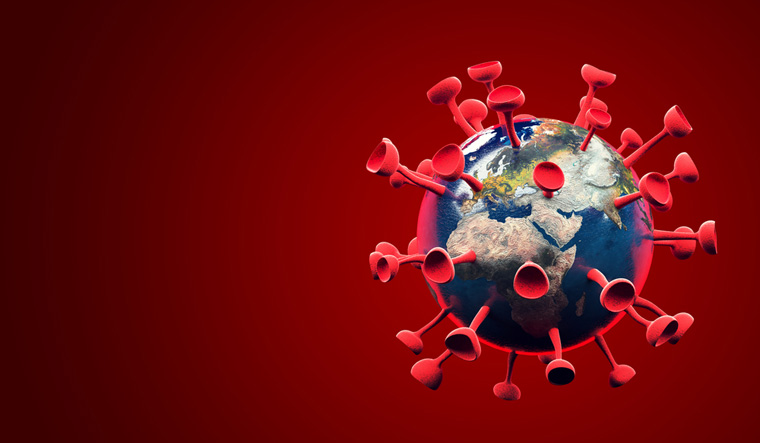The SARS-CoV-2 virus, which causes COVID-19, is most ideally adapted to infect human cells, rather than bat or pangolin cells, according to a study which raises questions about the origin of the virus. The researchers from Flinders University and La Trobe University in Australia used high-performance computer modelling of the form of the SARS-CoV-2 virus at the beginning of the pandemic to predict its ability to infect humans and 12 domestic and exotic animals.
The study, published in the journal Scientific Reports on Thursday, aimed to help identify any intermediate animal vector that may have played a role in transmitting a bat virus to humans.
The researchers used genomic data from the 12 animal species to painstakingly build computer models of the key ACE2 protein receptors for each species.
These models were then used to calculate the strength of binding of the SARS-CoV-2 spike protein to each species' ACE2, which acts as the receptor for SARS-CoV-2 and allows it to infect the cell.
The results showed that SARS-CoV-2 bound to ACE2 on humans cells more tightly than any of the tested animal species, including bats and pangolins.
The researchers explained that if one of the animals species tested was the origin, it would normally be expected to show the highest binding to the virus.
"Humans showed the strongest spike binding, consistent with the high susceptibility to the virus, but very surprising if an animal was the initial source of the infection in humans," said David Winkler, a professor at the La Trobe University.
"The computer modelling found the virus's ability to bind to the bat ACE2 protein was poor relative to its ability to bind human cells, Winkler said.
This, the researchers said, argues against the virus being transmitted directly from bats to humans.
"If the virus has a natural source, it could only have come to humans via an intermediary species which has yet to be found," said Professor Nikolai Petrovsky from Flinders University.
The team's computer modeling shows the SARS-CoV-2 virus also bound relatively strongly to ACE2 from pangolins, a rare exotic ant-eater found in some parts of South-East Asia.
Winkler said pangolins showed the highest spike binding energy of all the animals the study looked at, significantly higher than bats, monkeys and snakes.
The researchers said it was incorrectly suggested early in the pandemic by some scientists that they had found SARS-CoV-2 in pangolins.
"This was due to a misunderstanding and this claim was rapidly retracted as the pangolin coronavirus they described had less than 90 per cent genetic similarity to SARS-CoV-2 and hence could not be its ancestor," Petrovsky said.
This study and others have shown, however, that the specific part of the pangolin coronavirus spike protein that binds ACE2 was almost identical to that of the SARS-CoV-2 spike protein.
This sharing of the almost identical spike protein, which allows the virus to enter the cells, almost certainly explains why SARS-CoV-2 binds so well to pangolin ACE2, according to the researchers.
"Overall, putting aside the intriguing pangolin ACE2 results, our study showed that the COVID-19 virus was very well adapted to infect humans," Petrovsky said.
The study also suggests that some domesticated animals like cats, dogs and cows are likely to be susceptible to SARS-CoV-2 infection too.
The extremely important and open question of how the virus came to infect humans has two main explanations currently, they said.
The virus may have passed to humans from bats through an intermediary animal yet to be found (zoonotic origin), according to the researchers.
However, it cannot yet be excluded that it was released accidently from a virology lab, they said.
A thorough scientific, evidence-based investigation is needed to determine which of these explanations is correct, the researchers added.





